The LEGO Group has broken ground on its new carbon-neutral run factory in Meadowville Technology Park in Chesterfield, Virginia, USA.

This $1 billion investment in the company’s long-term growth globally will help delight millions of children in the Americas with LEGO® play.
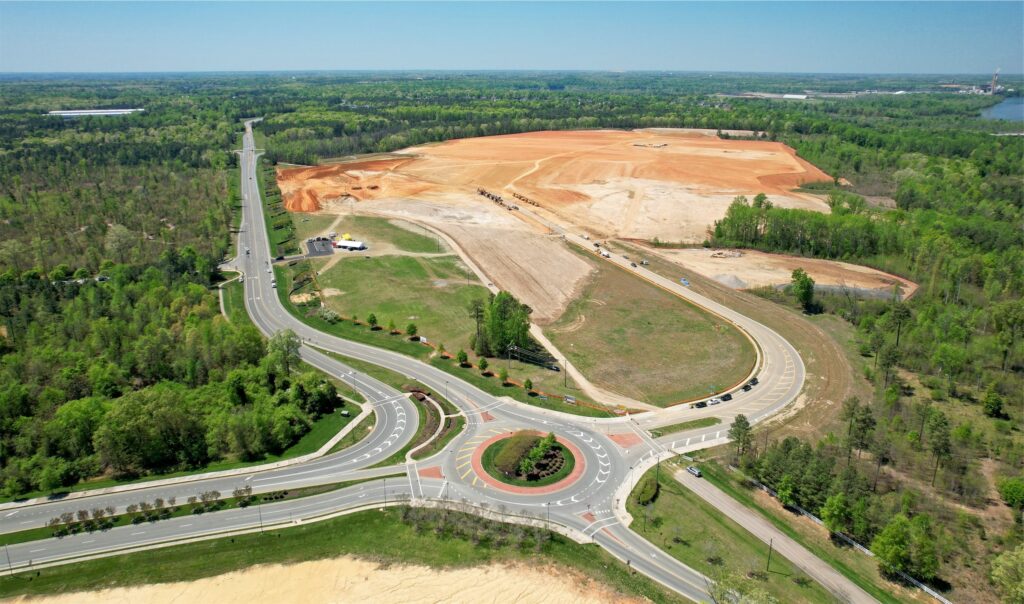
Once completed in 2025, the 340 acres site, the size of 260 American football fields, will have rooftop and ground solar panels and an on-site 35-40 MW solar plant, generating the equivalent of the energy needed to power approximately 10,000 American homes. The LEGO Group’s ambition is for the solar plant to match the total annual energy requirements of the site.
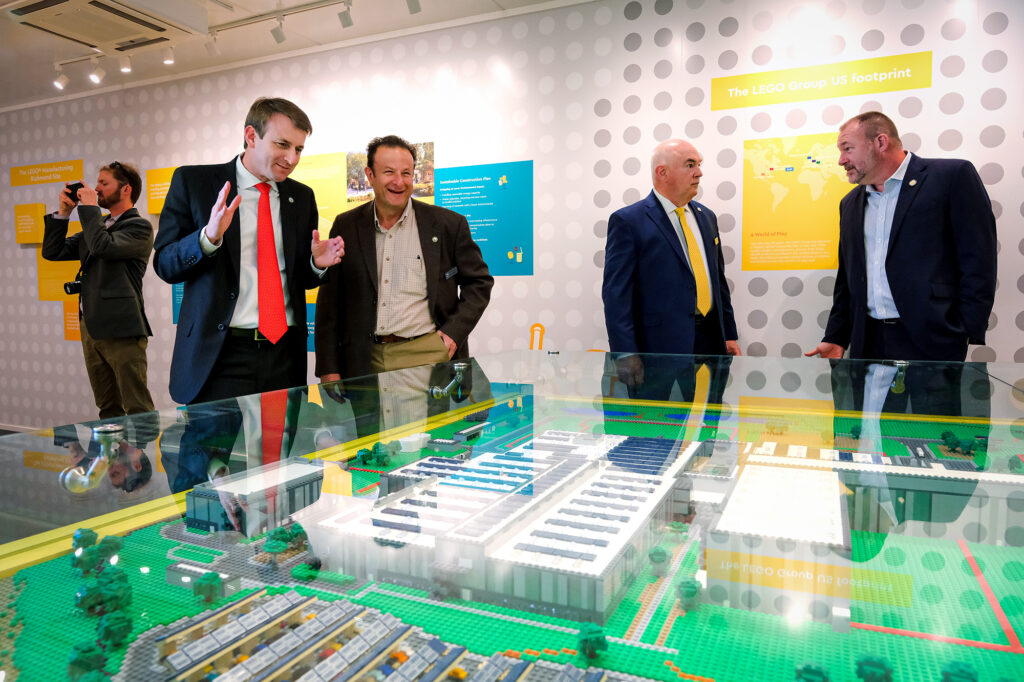
The site will be designed to support the company’s sustainability ambitions, including reducing its absolute global carbon emissions by 37 percent by 2032. It will use the latest energy-efficient production equipment while buildings and manufacturing processes are designed to minimize energy use.
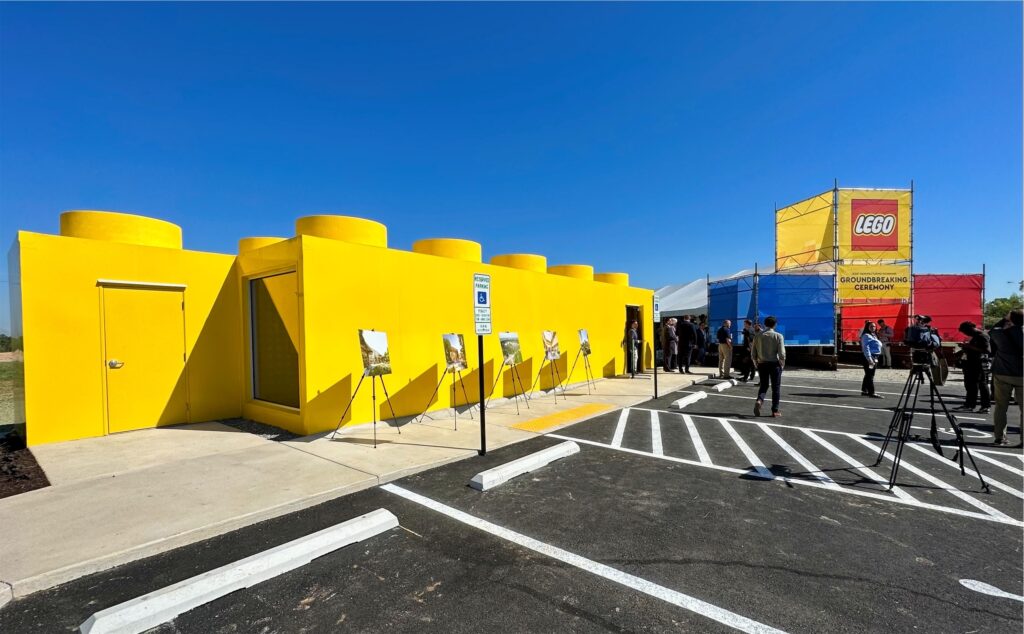
Carsten Rasmussen, Chief Operations Officer of the LEGO Group, said: “We are absolutely delighted to mark the beginning of construction here in Virginia. We are grateful for the fruitful collaboration we have had with all partners across the Commonwealth of Virginia who share and support our ambition to build this factory.
“We are working hard to reduce emissions at the LEGO Group and are really excited about our plans to build this solar plant as we push towards a better world for our children to inherit. Our new site will allow us to inspire millions of children across the Americas through play and we can’t wait to get started.”
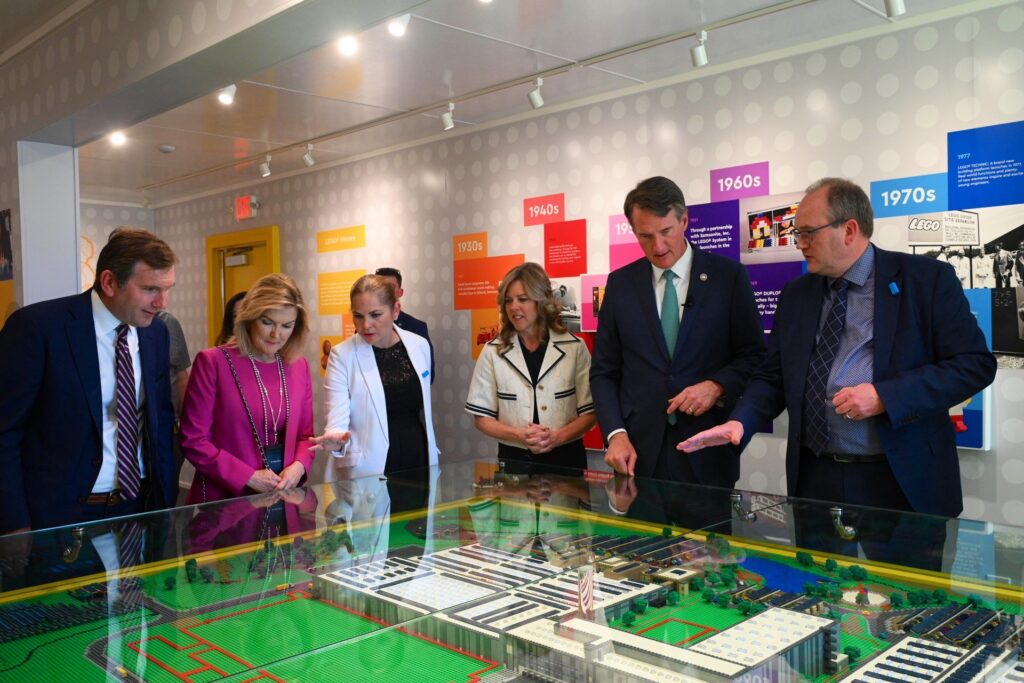
Today’s groundbreaking ceremony was attended by LEGO Group Chief Operations Officer, Carsten Rasmussen; LEGO Group Regional President, Americas, Skip Kodak; along with top Virginia and county officials and key partners.

More than US $1 million for children’s programs in the greater Richmond area
To celebrate the groundbreaking, the LEGO Group revealed it would officially ramp up its community investments by providing over $1 million to charitable organizations supporting local children from disadvantaged backgrounds with learning through play programs.
This donation is above and beyond the $300,000 provided in support of the Children’s Museum of Richmond and the Science Museum of Virginia in 2022 as part of the ongoing LEGO Playful Learning Museum Network initiative.
Carsten Rasmussen said: “We are honored to have been so warmly welcomed by the people of the Commonwealth of Virginia. We are committed to making a meaningful contribution to the community and giving children opportunities to realize their potential. We look forward to working with local partners and organizations to support initiatives that inspire kids.”
The LEGO Group will announce other recipients of the donation provided in collaboration with the LEGO Foundation in the Summer.

Landscape design inspired by children
Children of the greater Richmond area will also have a say in the site’s development. In March, the LEGO Group invited 250 children to share their ideas for making the land around the factory buildings welcoming to animals, plants, and visitors.
Built with LEGO bricks, their ideas ranged from building trees for flying squirrels and birds to fitting plants with cameras to let visitors observe the area’s biodiversity, life, and color. The children’s boundless creativity will inspire the final landscaping design in 2025.
Locating factories close to major markets
The factory investment in Virginia will expand the LEGO Group’s global manufacturing network, which is designed to locate factories close to major markets. It allows the LEGO Group to respond to shifts in local demand, shorten the supply chain, and reduce its environmental impact.
Recruiting 1,760 skilled employees for a diverse and inclusive workplace
The LEGO Group is recruiting up to 500 people to join a temporary packing facility due to open in the first half of 2024. Once the main factory is fully operational, it will employ 1,760 highly skilled workers responsible for operating state-of-the-art molding, processing, and packing machinery.
The company is participating in the Virginia Talent Accelerator Program to raise awareness of current and future roles in the local talent market.
The LEGO Group is committed to providing safe, diverse, and inclusive workplaces where everyone feels welcome. The new location will feature well-being areas, parents’ facilities, and multi-faith rooms, while break rooms and common areas will be inspired by the company’s core value of fun, and designed to become playful spaces.
The company also offers inclusive benefits such as extended paid parental leave: 26 weeks at full pay for the primary caregiver and eight weeks for the secondary caregiver to be decided by the parents.
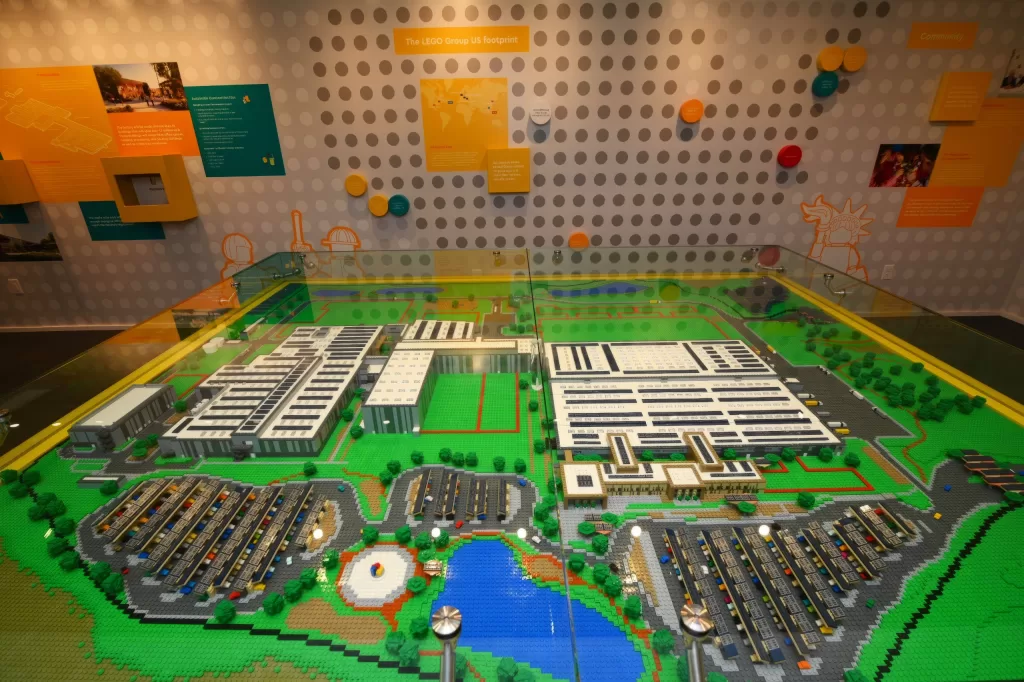
Facts LEGO Manufacturing Richmond
Investment: US $1 billion
Jobs: 1,760 positions over ten years, recruitment ongoing for 500 roles in new packing facility. For a complete list of jobs, visit: www.legocareersvirginia.com
Land: 340 acres/137 hectares, equivalent to 260 American football fields.
Buildings: 13 buildings spanning over 1.7 million sq. ft./160.000 m2 ranging from office spaces, molding, processing, packing buildings, and a high bay warehouse.
Blueprint: Same blueprint for all LEGO factories – high-tech production equipment that ensures each brick is made to the accuracy of 1/10th of a hair’s width. This precision means that LEGO bricks made today fit perfectly with bricks and products produced over the past 60 years.
Location: Chesterfield County, Virginia, USA
Sustainability
Carbon-neutral run: When completed, the LEGO factory aims to be carbon-neutral run, which means it can demonstrate net-zero emissions from electricity and fuel use (scope 1 and 2) using on-site or off-site renewable energy.
Solar plant on-site: 35,000-40,000 ground panels, 15,000-20,000 roof panels, 30-35 MW in total capacity.
Zero waste to landfill: The new factory shares the same ambition as all LEGO operations of achieving zero waste from factories to landfill.
Certification: The aim is to secure Gold LEED certification (Leadership in Energy & Environmental Design) for the building once it is completed, including energy, water, and waste.
Construction timeline
2024 H1: Packing in the temporary building begins.
2025 H2: Production commences, and the solar plant is completed.